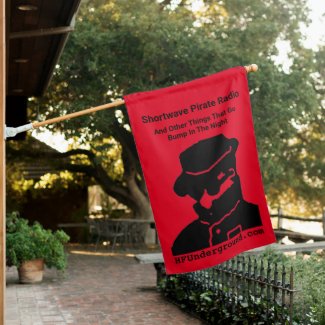http://hackaday.com/2017/07/10/horns-across-america-the-att-long-lines-network/Horns Across America: The AT&T Long Lines Network
by: Dan Maloney
July 10, 2017
A bewildering amount of engineering was thrown at the various challenges presented to the United States by the end of World War II and the beginning of the Cold War. From the Interstate Highway System to the population shift from cities to suburbs, infrastructure of all types was being constructed at a rapid pace, fueled by reasonable assessments of extant and future threats seasoned with a dash of paranoia, and funded by bulging federal coffers due to post-war prosperity and booming populations. No project seemed too big, and each pushed the bleeding edge of technology at the time.
Some of these critical infrastructure projects have gone the way of the dodo, supplanted by newer technologies that rendered them obsolete. Relics of these projects still dot the American landscape today, and are easy to find if you know where to look. One that always fascinated me was the network of microwave radio relay stations that once stitched the country together. From mountaintop to mountaintop, they stood silent and largely unattended, but they once buzzed with the business of a nation. Here’s how they came to be, and how they eventually made themselves relics.
Long Lines
Post-war America had a connection problem — huge populations on the coasts and around the Great Lakes, with scattered and smaller cities between. Stitching these population centers together with telephone cables had already largely been completed as part of the American Telephone and Telegraph Long Lines network. But the twisted pair and coax cables of the early voice network were ill-suited for the higher bandwidth needs that AT&T’s engineers knew were on the horizon.
Without being able to force more bandwidth down the installed cables, and with existing shortwave radio links suffering from similar bandwidth limits plus the vagaries of ionospheric propagation, AT&T engineers went up the spectrum — way up. Leveraging work from a 1944 trial system AT&T built to link Boston and New York, AT&T started to plan a coast-to-coast network of microwave relay stations in the C-band from 4 to 8 GHZ that would not only carry hundreds of simultaneous telephone calls, but would yield enough bandwidth to carry the newness of the day — television signals.
The Long Lines coast-to-coast microwave system was inaugurated in 1951 with a televised address by President Truman. The system continued to be built out over the 1950s and saw increasing use by the television networks as the profits from advertising on a national level started rolling in. The Long Lines network played a huge role in shaping the post-war American culture, which by and large was televised live and coast-to-coast.
A typical microwave relay station in the Long Lines system was located either on a mountaintop or on top of a tall building. On or adjacent to the equipment building was an extremely sturdy tower that held the most obvious calling card of the system — enormous “horn of plenty” style microwave antennas designed to provide plenty of gain and pinpoint directionality. Each station had a line-of-sight view of the next station in the network; they had sufficient range and were sited such that it only took 34 hops to cover the 840 miles route from New York to Chicago.
Planned and built during some of the chilliest days of the Cold War, these facilities were seen as vital parts of the national infrastructure, and were treated as such. Depending on the location, some of the structures were designed to withstand a 20-megaton nuclear blast 2.5 miles away. All of the sites had enormous backup generators with huge fuel tanks in case mains power was lost, which was a daily possibility due to the remoteness of many of the sites. Many of the facilities had large basements under the equipment room that were set up as bomb shelters, complete with Civil Defense supplies. That network engineers were expected to be at their post when World War III kicked off was never in question; AT&T even went so far as to post plaques in their facility with mission-centric messages like “Communications is the foundation of democracy,” presumably to inspire the staff as they rose from the ashes to rebuild civilization.
Done in by a Pin
In the end, AT&T Long Lines was a victim of its own success. With fat profits from telephone and television, a government-backed monopoly, and huge expensive installed base of equipment, AT&T was too busy sitting on its laurels to notice looming threats in the 1970s. The political winds shifted and led to a different attitude toward the Bell System and a forced breakup of the giant. But it was research conducted by Bell Labs itself that led to the Long Lines network’s demise: fiber optics. Companies like Sprint seized the opportunity presented by the breakup to launch their “You can hear a pin drop” fiber networks, and coupled by improved satellite relays and the rise of digital communication modes, the end of the old analog microwave network was at hand.
Some towers at sites overlooking population centers have been stripped of their horns and now live a second life as cell phone sites, while some are so remote that they’re available for a song. But many of the sites remain largely intact on the outside, silent horns pointing off into the distance, serving now only as mountaintop monuments to a worthy national effort to stitch a continent together.



